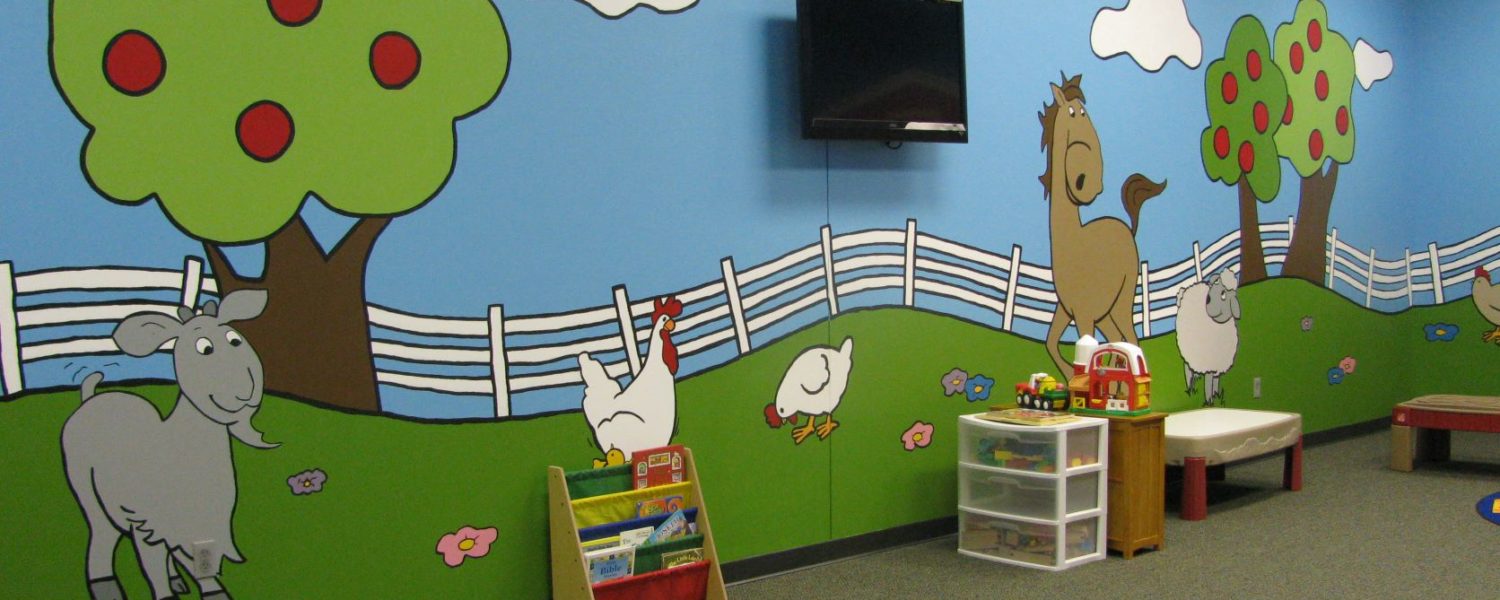By Addie Sorbo
A big part of a successful children’s ministry program is creating fun, inviting spaces that will appeal to kids and make them excited to go to church. Whether you’re starting from scratch or looking for a refresh for your church’s children’s area, choosing and implementing relevant themed spaces can be a daunting task. How do you even start?
By working through The Design Process, you’ll be set up for success on coming up with ideas for great themes that will be relevant to the people of your church. Following are the first four steps of The Design Process:
Step 1: Define the Problem
The first part of The Design Process is to define the problem that you are trying to solve. This is the most important step, as it’s intended to help guide all design decisions. When working to Define the Problem, here are some questions to answer:
- Who are you serving? Is your children’s ministry divided into specific age groups?
- What are the spaces? Is your children’s ministry space divided into different areas or rooms? Do you have a nursery? Do you have classrooms for specific ages? Is there a large gathering space or gym for worship or activities? Do you have specific needs for each space?
- What are the goals you are trying to accomplish? Do you have specific programs that use those spaces (i.e., kids church, Sunday school, catechism, childcare)?
Once you’ve answered these questions, craft your goal statement – a sentence or two explaining your project’s specific goals.
Here’s an example: [Church Name’s] children’s ministry goal is to create fun, inviting, and secure spaces for nursery (birth to 23 months), three classrooms for preschool (ages 2 to 5 years) on Sundays and elementary (ages 6 to 12 years) catechism classes, and a multi-purpose space/gym for kid’s church (elementary) on Sundays and youth group and special events.
As you work through the next steps, it’s important to check if they align with your goal statement.
Step 2: Research
- Further define who you are serving. Think about your church’s culture. Are you more modern or traditional? What makes your congregation unique? What are the demographics of your church? Ask the kids what they love about their church.
- Know the space and your budget. Look at floor plans and get acquainted with the attributes and limitations of each space. Are there colors, textures, surfaces, or styles (flooring, fixtures, furniture) that you’ll need to work with? How is the lighting? What is your budget?
- List specifics. Are there things you’ll need to build (i.e., a puppet stage, AV area, reading area, food storage, a jungle gym)?
Step 3: Brainstorm! Generate Ideas
- Nurture ownership. We’re finally getting to the fun part! Get your church – especially the kids – involved in this step. Ask your congregation for theme ideas. You could send out a survey to families, ask kids for ideas during Sunday School, or have a board where people could list their theme ideas.
- Have a brainstorming session. Get together a group of core individuals for an idea-generating session. Make sure this group consists of children’s ministry leaders, workers, and families with kids representing all ages of whom you are serving. When you meet, explain your children’s ministry goals (remember that goal statement from Step 1?) and list the theme ideas already submitted by your congregation. Then, split into groups of four to six for a timed brainstorming session. Equip each group with paper and markers – Post-It’s work real well, too – and have them choose one person to write their list. Let them know they only have 10–12 minutes to brainstorm and their goal is to generate 50 or more theme ideas. Have them write down every idea that pops into their minds. Explain that there are no bad ideas and no editing or discussion at this point – that will come later. It’s simply writing down as many ideas as quickly as possible. Quantity to get to quality. Afterwards, meet as a full group to discuss your ideas. Which themes are people most passionate about? Work on editing your list down to a few ideas for each specific space.
Step 4: Evaluate Your Solutions – Solidify Your Themes
- Do your themes have longevity? Your children’s ministry themes serve as its brand. How each space is designed will influence logos, signage, printed materials, and programming. It’s critical to design a theme that will have longevity – think “classic vs. trendy.” You don’t want to be redoing the entire process again in a few years! Some classic themes include animals (i.e., zoo, Noah’s Ark, kids, circus, barnyard), people (i.e., kids playing in a park, stories from the Bible, or relatable professions – astronaut, chef, police officer, construction worker, teacher), and places/scenes (i.e., towns, Biblical places, spaceship, camping). Try to avoid trendy themes like characters from current movies, a TV series, books, or the Internet, or music and musical artists/groups. Not only could they go out of style quickly, but you can also run into issues with copyright.
- Do your themes have WOW? Which ideas could allow for that “wow factor” while fitting into your budget? Could the entrance to your Noah’s Ark-themed space be built like the entrance to the Ark? Could you create a giant tree as a focal point in your zoo-themed nursery?
- Do your themes have options? Go back to your list of specific things you’ll need for your space. Which theme options provide creative ideas to fulfill those needs? If you need a puppet stage, could you build a barn in a barnyard theme?
- Do your themes appeal to both kids and adults? This advice came directly from our children’s pastor. Develop a theme that not only the kids will enjoy but that you as an adult are excited about. If you are excited about a theme, your kids will be, too. A great theme with uninterested adults will fall flat.
Creating themed spaces for your children’s ministry is a great way to make church fun and inviting for kids. By spending the time to work through The Design Process, you’ll set yourself up to create relevant solutions that fit. Enjoy!
Addie Sorbo is a graphic and web designer and serves as founder and creative director at Strawberry Fields Design, Inc., www.strawberryfieldsdesign.com.















